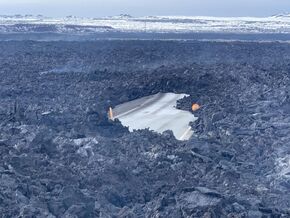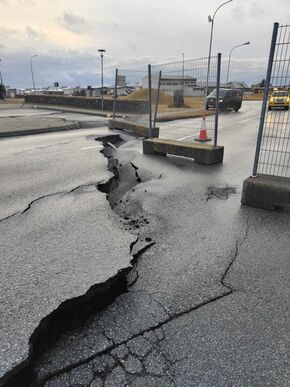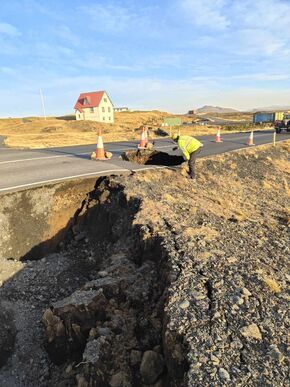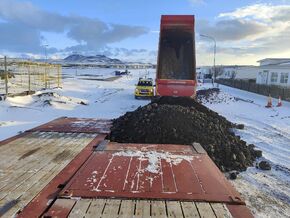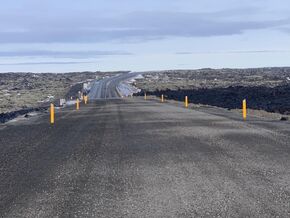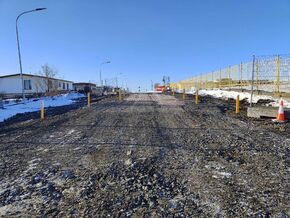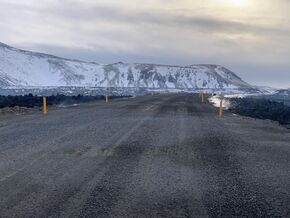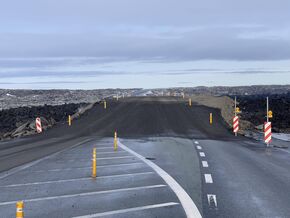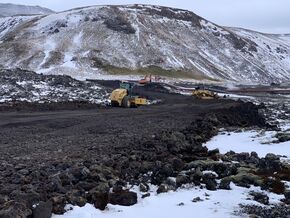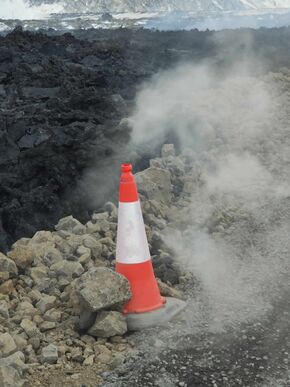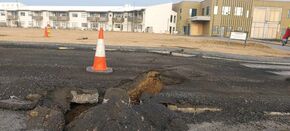IRCA‘s work in and around Grindavík
Earthquakes and volcanic eruptions in Reykjanes have left a big impression on the Icelandic Road and Coastal Administration's (IRCA) operations this winter
Earthquakes and volcanic eruptions in Reykjanes have left a big impression on the Icelandic Road and Coastal Administration's (IRCA) operations this winter. Since the earthquakes and volcanic eruptions began in Grindavík in November 2023, Vegagerðin has carried out a variety of projects in and around the town. Road repairs, road construction, increased winter service, mapping of cracks and cavities under the town and involvement in the construction of embankments are among the main projects.
A lot of emphasis has been placed on keeping all the main roads in and around Grindavík open since the volcanic activities began on the Reykjanes Peninsula last fall to keep evacuation routes clear.
Following the powerful November 10 earthquakes there was extensive damage done to the roads in and around Grindavík. Grindavíkurvegur (43) was damaged with the result that it had to be closed. Yet, that same evening, repairs began right away as it is an extremely important route from main road Reykjanesbraut (41) and into Grindavík. The next day, it turned out that Nesvegur (425), west of Grindavík, opposite the golf course, was also damaged and a huge crack ran through the road. As soon as permission was obtained from The Civil Protection and Emergency Management, repairs on Nesvegur (425) started so that the road could be kept open to traffic and that it could be uses for evacuation.
IRCA, in cooperation with contractors, has carried out repairs on municipality streets within Grindavík, many of which were badly damaged after the large earthquakes. Among the things that have been done is temporarily bridging Austurvegur, the main road through Grindavík, with container flat beds, but a big fissure runs deep through the road. A crack impossible to fill, especially since the earth is still moving and seismic activity is ongoing.
In a volcanic eruption on February 8, lava flowed over a section of Grindavíkurvegur (43) and over the road to the Blue Lagoon (426). As soon as it was possible, a new section of road was built over the extremely hot lava, which is now fully operational. As there is a lot of heat in the road on this section, it is not allowed to stop there. Work is also underway to build a new road that connects to Bláalónsvegur.
Winter service priority
The Road Administration has put a lot of emphasis on winter service to keep the roads to Grindavík open, passable, and safe. Winter service includes, among other things, removing snow from roads and de-icing roads as appropriate. The Road Service Centre provides all information about road closures and openings at infotraffic.is or umferdin.is. Information can be found in Icelandic, English and Polish.
Mapping of cracks and fissures
Since January, Vegagerðin has been working to map cracks and potential cavities in Grindavík with a special geodetic drone, a smaller hand driven geodetic and a geodetic that is part of a high-tech measuring vehicle. The data will be used to prioritize repairs in the town and will be useful for emergency responders and those planning to move effects from residences in town. The information will also be useful to determine which repair methods can be applied to the main cracked areas.
Embankments and IRCA
The Road and Coastal Administration has been a vital part in constructing embankments or walls that are being built to protect Grindavík on the one hand and the power plant in Svartsengi and the Blue Lagoon on the other. Embankments are built more to force the lava to flow in certain directions rather than to stop it completely. The first embankments to be built have proven to be doing exactly that.
Keep an eye on umferdin.is

